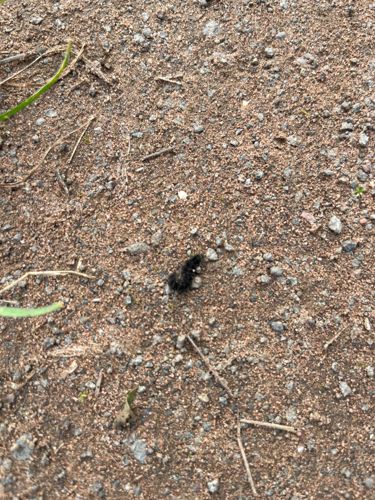Woolly Bear Caterpillar (likely Isabella Tiger Moth caterpillar)
Scientific Name: Pyrrharctia isabella (for Isabella Tiger Moth)
Order & Family: Lepidoptera, Erebidae
Size: Approximately 1 to 2 inches (2.5 to 5 cm) in length when fully grown.

Natural Habitat
Gardens, fields, woodlands, roadsides – generally terrestrial and found on the ground or low-lying vegetation.
Diet & Feeding
Herbivorous. They feed on a wide variety of low-growing plants, weeds, and sometimes tree leaves. Common food sources include dandelions, asters, clover, and plantain.
Behavior Patterns
Woolly bear caterpillars are known for their distinctive movement, often seen crawling on the ground in a humped fashion. They are solitary and are most commonly observed in the fall, when they are searching for overwintering sites, or in the spring, after emerging from hibernation. They curl into a ball when disturbed. They overwinter as caterpillars and pupate in the spring.
Risks & Benefits
Generally harmless to humans; their bristles do not sting or cause significant irritation, though some individuals might experience mild skin irritation from direct contact. They are beneficial as they are a food source for birds and other wildlife. While they feed on plants, they are not typically considered a significant pest to agriculture or home gardens due to their generalist diet and solitary nature.
Identified on: 10/18/2025